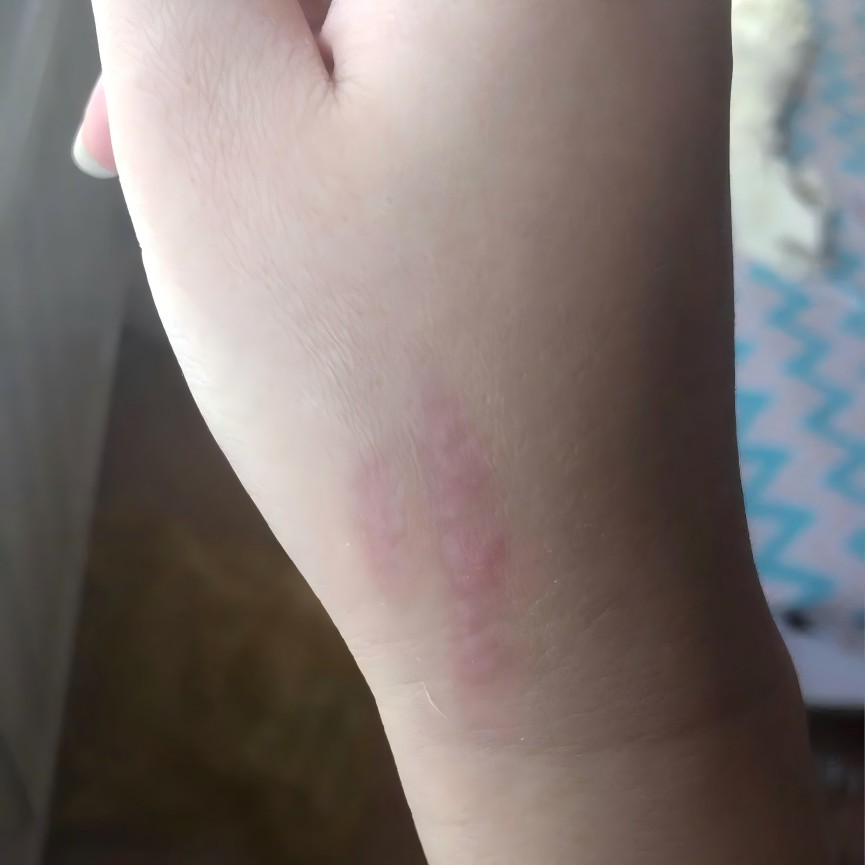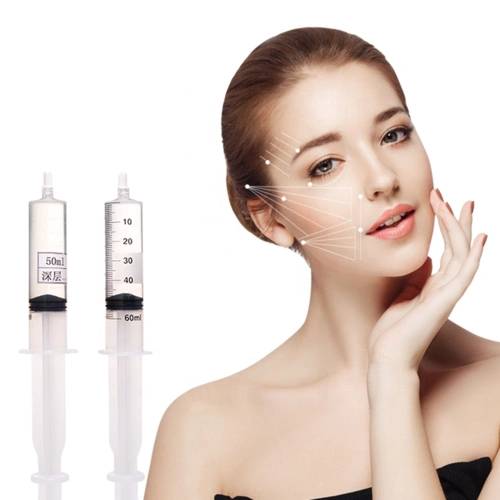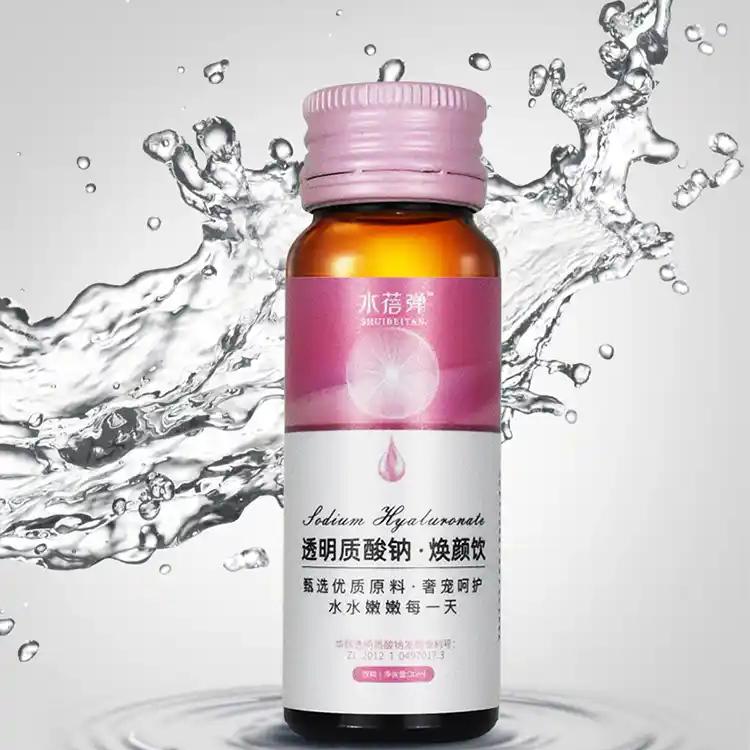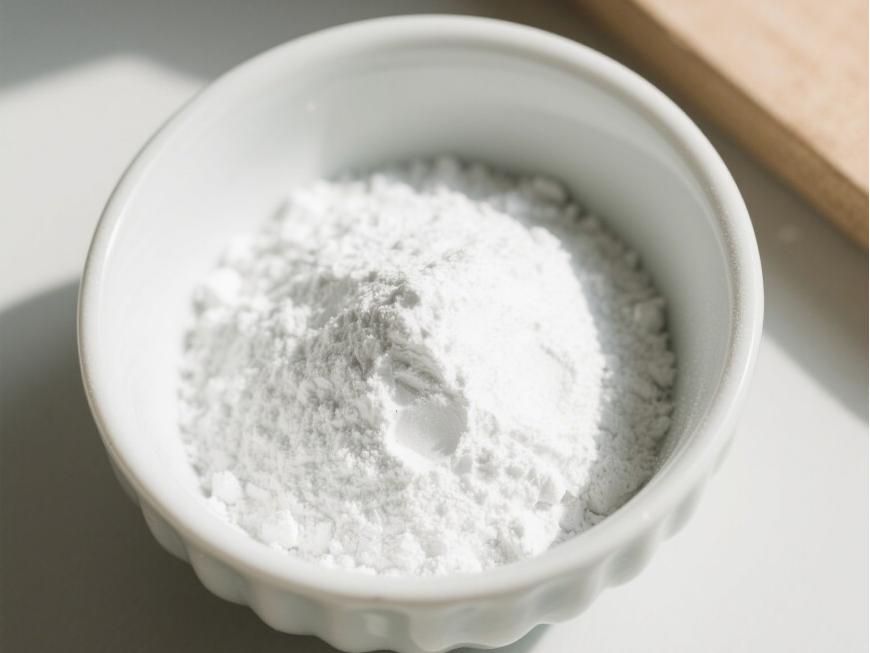Exploring Innovation with Hyaluronic Acid Powder in Skincare Products
Ácido hialurónico (HA) and its salts are physiologically active substances naturally occurring in the human body. They constitute high-molecular-weight mucopolysaccharides composed of glucuronic acid and N-acetylglucosamine disaccharide units. Commercially available Ácido hialurónico is primarily produced through biotechnological fermentation. It finds extensive application in skincare products, personal care items, and health foods, with molecular weights ranging from several thousand to millions. It possesses outstanding moisturising properties, biocompatibility, and soothing characteristics.
Recent research indicates that hyaluronic acid demonstrates significant application potential in skincare formulations. Its exceptional moisturising and restorative capabilities, coupled with its gentle nature, have established it as a core ingredient favoured by numerous premium skincare brands. It is extensively utilised in serums, masks, creams, and high-performance skincare products.
Green Spring Technology, as a specialised supplier of hyaluronic acid Polvo polvo polvo, is committed to providing clients with high-quality, multi-molecular-weight, and high-purity hyaluronic acid ingredients. Our raw materials possess outstanding stability and formulation adaptability, effectively enhancing the texture, moisturising performance, and overall experience of end products. This assists brands in developing safer, more effective skincare solutions.
1 Applications of Hyaluronic Acid Polvo polvo polvo in Skincare and Repair
As anatural bioactive ingredient, hyaluronic acid Polvo polvo polvo demonstrates extensive application potential in skincare and repair. Its superior moisturising properties and biocompatibility make it a crucial raw material for various premium skincare and treatment products.
In aiding skin repair, hyaluronic acid synergises with multiple proteins to help maintain localised environmental stability and support the skin's self-repair processes. Its characteristics include: (1) assisting in establishing a microenvironment conducive to repair; (2) regulating localised conditions; (3) low molecular weight hyaluronic acid promoting microcirculation; (4) assisting in maintaining collagen balance;(5) supporting healthy proliferation of epithelial cells; (6) possessing exceptional moisturising capabilities aligned with contemporary skincare principles.
Multiple clinical observations indicate that skincare products incorporating hyaluronic acid deliver outstanding user experience and satisfaction. For instance, certain gel formulations containing hyaluronic acid demonstrate favourable auxiliary repair effects and a comfortable skin feel during application, earning user preference.Further experiments indicate that such products significantly improve localised skin conditions post-application, enhance overall comfort, and demonstrate excellent tolerability, earning high recognition from both users and skincare professionals.
Currently, diverse formulations centred on hyaluronic acid powder have been launched across multiple global markets, encompassing gels, sprays, solutions, and other forms. This provides a rich array of options for skincare tailored to varying needs and scenarios. These products are increasingly becoming integral components of both personal daily routines and professional skincare regimens.

2 The Application Potential of Hyaluronic Acid Powder in Soothing and Repair Products
Research indicates hyaluronic acid plays a vital role in the skin's response to various external stimuli. Experimental observations reveal that following exposure to certain physical or chemical factors, localised skin hyaluronic acid levels exhibit a marked increase, with particularly active concentrations observed in the epidermal layer.
Leveraging the exceptional properties of hyaluronic acid, soothing and repair creams centred on this ingredient have gained traction in international markets. These products primarily leverage their excellent biocompatibility and moisturising/soothing properties to alleviate skin discomfort and enhance user comfort.
An observational study involving over 200 users revealed that after applying hyaluronic acid-enriched special care creams, the majority reported noticeable improvements in skin condition and significantly elevated self-assessment scores, with particularly outstanding results in reducing skin sensitivity. The inclusion of this ingredient effectively enhances the product's overall mildness and user experience.
3 Innovative Applications of Hyaluronic Acid Powder in Personal Care and Cosmetics
As a highly regarded bioactive ingredient, hyaluronic acid powder has demonstrated broad application prospects in premium skincare and cosmetic products. Since the 1990s, care products centred on cross-linked hyaluronic acid have been successively launched across multiple global markets. Brands from Sweden, China, the United States, Canada, and the United Kingdom, among others, have driven technological innovation and product upgrades within the industry.
Within formulations, this ingredient primarily functions as a supportive and contouring agent, frequently employed to enhance facial contours and skin texture. Its appeal lies in delivering phased maintenance effects coupled with excellent biocompatibility. While temporary localised reactions may occur during application, overall tolerance remains high.
User tracking feedback indicates that after using products containing cross-linked hyaluronic acid, the majority of users report immediate improvements in skin appearance, with effects persisting for a certain period. Observations also suggest that this ingredient is generally well-tolerated during use, with no significant persistent adverse reactions reported.
With ongoing technological advancements, hyaluronic acid-based ingredients have become a key choice for many high-end skincare and cosmetic products, offering greater possibilities for product innovation and consistently receiving positive market feedback.
4 Exploring the Application of Oral Hyaluronic Acid Products in Skin Hydration
As a natural ingredient with exceptional moisturising properties, hyaluronic acid has garnered significant attention in the field of oral beauty supplements in recent years. When ingested, hyaluronic acid is absorbed and utilised by the body, helping to enhance overall skin moisture retention, improve skin texture, and promote softening of the stratum corneum, thereby providing intrinsic support for healthy, radiant skin.
Multiple studies have examined the absorption and utilisation of Ácido hialurónico oral. Human and animal trials indicate that serum hyaluronic acid levels exhibit phased changes over time post-ingestion, suggesting gradual absorption and systemic distribution. Similar absorption patterns have been observed in relevant domestic and international experiments.
Regarding skin condition improvement, consumer feedback studies indicate that daily supplementation with appropriate doses of high-purity hyaluronic acid for several weeks generally resulted in participants perceiving their skin as softer, smoother, and more hydrated. Additional observations suggest that after prolonged use of hyaluronic acid-containing compound formulations, users exhibited positive changes in skin moisture levels compared to baseline, with overall skin condition showing improvement.
Currently, the international market offers multiple oral beauty products containing hyaluronic acid, available in various formulations, including tablets, capsules, and oral liquids. These provide consumers with diverse options for nourishing the skin from within.

5 Hyaluronic Acid: An Exceptional Moisturising and Protective Ingredient in Cosmetics
Hyaluronic acid is acclaimed as an ideal natural moisturising ingredient, possessing exceptional theoretical water-retaining capacity that far surpasses many common moisturising agents. Unlike traditional moisturisers, hyaluronic acid maintains stable hydration across varying environmental humidity levels. It exhibits exceptional hygroscopicity in low-humidity conditions while resisting excessive moisture absorption in high-humidity environments. This adaptability enables intelligent moisture management suited to diverse seasons and climates, making it widely applicable across skincare formulations.
Furthermore, hyaluronic acid garners significant attention for its potential in skin protection. In environments with intense ultraviolet radiation, skin becomes susceptible to external irritants. Through its potent bioactivity, hyaluronic acid assists in soothing skin discomfort and supports the skin's self-repair processes. Its mechanism of action differs from traditional UV absorbers, synergistically enhancing a product's overall protective efficacy to deliver multifaceted care for the skin.
Experiments demonstrate that hyaluronic acid powder offers auxiliary benefits in alleviating skin discomfort caused by external irritants, helping to improve skin condition and comfort. Consequently, cosmetics incorporating hyaluronic acid are increasingly favoured by consumers in the marketplace.
Currently, hyaluronic acid is extensively utilised across diverse cosmetic formulations, spanning creams, lotions, toners, serum capsules, masks, and personal cleansing products. It has become an indispensable functional ingredient in modern skincare formulations.

6 Hyaluronic Acid Powder: Application Potential as an Innovative Cosmetic Matrix Ingredient
Hyaluronic acid presents as a white granular or powdered solid, odourless, readily swelling in water to form clear solutions or gel states. Its extended molecular structure confers excellent viscoelasticity and unique rheological properties, classifying it as a non-Newtonian fluid. These favourable physical characteristics offer extensive application possibilities within cosmetics.
Research indicates that hyaluronic acid, as a component with outstanding biocompatibility, demonstrates significantly greater mildness than certain traditional matrices. It is currently employed as a foundational ingredient in multiple premium skincare categories, exhibiting broad application prospects.
Regarding functional ingredient delivery, hyaluronic acid powder exhibits favourable auxiliary penetration and retention capabilities. Experiments indicate it can enhance the efficacy of other active ingredients on the skin's surface and support their retention within the epidermis, thereby improving the overall performance of the product. Compared to other common matrices, hyaluronic acid excels in promoting localised delivery of active ingredients, a characteristic observed with various compounds including ibuprofen, clindamycin phosphate, and cyclosporine.
Multiple gel formulations developed with hyaluronic acid have gained traction in international markets, with users praising their excellent tolerability and application experience. Beyond basic skincare, the range of products utilising hyaluronic acid matrices continues to expand, encompassing diverse functional personal care items and offering fresh avenues for cosmetic innovation.
Since its successful isolation in 1934, hyaluronic acid has demonstrated extensive application value across multiple fields. As a natural active ingredient with outstanding properties, it plays an increasingly vital role in skincare, beauty, and personal care products. With its exceptional moisturizing capacity, biocompatibility, and unique rheological characteristics, hyaluronic acid has become an indispensable core ingredient for numerous premium skincare brands.
As a trusted supplier of hyaluronic acid powder, Green Spring Technology remains committed to providing clients with a premium range of hyaluronic acid solutions. Our ingredients offer excellent stability, outstanding hydration capabilities, and superior formulation adaptability. They are widely applicable in serums, masks, creams, lotions, and high-end functional skincare products, enhancing the texture, boosting moisturising effects, and optimising the overall user experience of end products.
As research and technology advance, the application prospects for hyaluronic acid in skincare continue to expand. Green Spring Technology will persistently drive innovation in raw material technology, collaborating with brand partners to develop more effective and gentler skincare solutions, thereby jointly propelling the advancement of the beauty and personal care industry.
For further details regarding technical specifications and application solutions for hyaluronic acid powder, please contact us at helen@greenspringbio.com or WhatsApp: +86 13649243917.
referencias
[1] Ling Peixue. Ácido hialurónico [M]. Beijing: China Light Industry Press, 2001: 84-85.
[2] Zhao Jingyu, Chai Jiake. Avances en la investigación sobre los efectos del ácido hialurónico exógeno en la cicatride heridas [J]. Chinese Journal of Injury and Reconstructive Surgery, 2011, 6(1): 65-67.
[3] Yuan Xiangmin, Ling Peixue, Wang Fengshan, et al. Resumen de la investigación sobre el hialuronato de sodio en el tratamiento de quemaduras y Escaldes [J]. Chinese Journal of biomedical Drugs, 2003, 24(2): 107-108, Appendix I-II.
[4] Humbert P, Mikosinki J, Benchikhi H, et al. Eficacia y seguridad de una almohadilla de gasa que contiene ácido hialurónico en el tratamiento de úlceras en las piernas de origen venoso o mixto: un ensayo doble ciego, aleatorio, controlado [J]. Int Wound J, 2013, 10(2): 159-166.
[5] otros O, Eficacia y seguridad del ácido hialurónico en el tratamiento de úlceras en las piernas: un ECA doble ciego [J]. J Wound Care, 2012, 21(3): 131-132, 134-136, 138-139.
[6] Eficacia y tolerancia de un apósito hidrocoloide que contenga ácido hialurónico para el tratamiento de úlceras en las piernas de origen venoso o mixto [J]. Curr Med Res Opin, 2008, 24(10): 2729-2739.
[7] Abbruzzese L, Rizzo L, Fanelli G, et al. Efectividad y seguridad de un novegel apósito en el manejo de úlceras neuropáticas de las piernas en pacientes diabéticos: un ensayo aleatoriprospectivo doble ciego [J]. Int JLow Extrem Wounds, 2009, 8(3): 134-140.
[8] Barrois B, Carles M, Rumeau M, et al. Eficacia y tolerabilidad de hialuronan (ialuset) en el tratamiento de úlceras por presión: un estudio piloto multicéntrico, no aleatorio [J]. Drogas R D, 2007, 8 (5): 267-273.
[9] Voinchet V, Vasseur P, Kern J. eficacia y seguridad del ácido hialurónico en el manejo de heridas agudas [J]. Am J Clin Dermatol, 2006,7(6):353-357.
[10] Zhang Rongxin, Wang Aoxue, Tu Caixia. Avances en la aplicación del ácido hialurónico en dermatología [J]. Chinese Journal of Bioaesthetics, 2009, (4): 64-69.
-
anterior
Empower Your Dietary Supplement Formulations with Hyaluronic Acid
-
siguiente
Exploring Innovation of Hyaluronic Acid Powder in Oral Care Formulations


 inglés
inglés francés
francés español
español ruso
ruso coreano
coreano Japonés japonés
Japonés japonés




